You’ll want to match your fitness tracker’s screen size to your wrist diameter—140-170mm wrists work best with smaller displays, while 180-210mm wrists can handle larger screens. Choose MIP displays for better battery life or AMOLED for vibrant colors, and guarantee the screen-to-case ratio stays between 70-85% for accurate touch input. Keep thickness under 12mm for comfort during sleep tracking, prioritize adjustable brightness for outdoor visibility, and select customizable watch faces for quick data access during workouts—these fundamentals will guide you toward the perfect display setup.
Match Screen Size to Your Wrist Diameter for Optimal Comfort
Finding the perfect fitness tracker means balancing screen size with your wrist’s unique dimensions to guarantee you’ll actually want to wear it every day.
The best fitness tracker is one that feels so natural on your wrist you forget you’re wearing it.
If your wrist measures 140-170 mm, you’ll find smaller screens more comfortable and less cumbersome during activities. Larger wrists between 180-210 mm can accommodate bigger displays that offer better readability and more detailed real-time feedback.
Don’t just follow general guidelines—test different sizes to discover what feels right for you.
While larger screens display more information and improve interaction with fitness data, they can overwhelm smaller wrists and become uncomfortable during high-intensity workouts. Consider that premium options like the Apple Watch 9 feature a 34.0 mm display, while athletic-focused models such as the Garmin Forerunner 965 offer a larger 41.8 mm screen for enhanced performance monitoring.
Prioritize comfort over features, because even the most advanced tracker won’t benefit you if it sits unused in a drawer.
Balance Display Brightness and Battery Life for All-Day Performance
You’ll need to strike the right balance between screen brightness and battery performance to guarantee your fitness tracker lasts through demanding workout days.
Your display technology choice—whether AMOLED or MIP—directly impacts how much power your screen consumes, with MIP displays offering superior battery efficiency for extended use.
Smart brightness management through adaptive features and optimized settings can extend your device’s battery life by several days while maintaining clear visibility. Lowering screen brightness and turning off the always-on display can save significant energy throughout the day.
Optimize Screen Brightness Settings
When you’re looking to maximize your fitness tracker’s battery life while maintaining clear visibility throughout the day, optimizing screen brightness becomes one of the most effective strategies you can employ. You’ll want to find the sweet spot between comfortable viewing and power consumption.
| Brightness Setting | Battery Impact | Visibility | Best Use Case | Power Savings |
|---|---|---|---|---|
| Auto Brightness | Moderate | Adaptive | Daily wear | 15-25% |
| 50% Manual | Low | Good | Consistent use | 20-30% |
| 25% Manual | Very Low | Fair | Indoor activities | 30-40% |
| 75% Manual | High | Excellent | Outdoor sports | 5-15% |
| Always-On Display Off | Very Low | On-demand | Maximum battery | 40-50% |
Consider locking brightness at 50% for consistent performance, or enable auto brightness to automatically adjust based on ambient lighting conditions. Remember that display brightness is a major factor in battery drain, so making thoughtful adjustments to this setting can significantly impact your device’s longevity.
Choose Battery-Efficient Display Technology
How does your fitness tracker’s display technology impact battery life throughout your daily workouts and activities?
You’ll find that MIP (Memory in Pixel) displays deliver exceptional battery longevity by using reflective technology, making them perfect for extended outdoor training sessions.
While AMOLED screens offer vibrant colors and sharp visuals, they’ll drain your battery faster than MIP alternatives. However, newer AMOLED variants have improved efficiency, narrowing this gap considerably.
When choosing your device, consider that higher resolution displays consume more power due to increased pixel counts.
Mid-resolution screens (260×260 pixels) consistently outperform high-resolution options (320×320 pixels) for battery life.
Look for features like selective pixel activation in AMOLED screens and ambient light sensors that automatically adjust brightness, helping you maximize performance during all-day wear. The Garmin Instinct 2X Solar demonstrates how MIP displays paired with solar charging can achieve unlimited battery life under optimal conditions.
Enable Adaptive Brightness Features
Adaptive brightness features automatically adjust your fitness tracker’s screen intensity based on surrounding light conditions, creating an ideal balance between visibility and power consumption.
You’ll find this “Auto” setting dims your display in low-light environments and brightens it in sunlight, greatly extending battery life throughout the day.
Your screen consumes the most energy, so adaptive brightness reduces power draw when full brightness isn’t necessary. You can toggle this feature on or off through your device settings, depending on your preferences.
If you disable adaptive brightness for manual control, expect faster battery depletion due to consistently higher brightness levels. Some users find that auto brightness may appear too bright during nighttime use, requiring manual adjustment to comfortable levels.
Modern trackers integrate adaptive brightness with ambient light sensors and AI personalization, learning your activity patterns to optimize display performance during workouts and daily use.
Choose AMOLED Vs LCD Based on Your Activity Requirements
As you evaluate fitness tracker displays, your specific activity requirements should drive your choice between AMOLED and LCD technology.
Consider where and when you’ll primarily use your device to make the best decision. For outdoor enthusiasts who frequently exercise in direct sunlight, LCD screens offer superior brightness and visibility.
However, if you’re training in variable lighting conditions—moving between indoor gyms, shaded trails, and bright outdoor spaces—AMOLED’s adaptability and high contrast ratios provide excellent performance. AMOLED displays can adjust brightness at the pixel level, reducing eye strain when moving between different lighting environments.
Choose based on these key factors:
- Power priorities: AMOLED conserves battery with dark themes and always-on displays
- Budget considerations: LCD screens typically cost less while delivering basic tracking functionality
- Visual quality needs: AMOLED delivers sharper resolution and richer colors for detailed interfaces
Prioritize Touch Accuracy With Proper Screen-To-Case Ratio
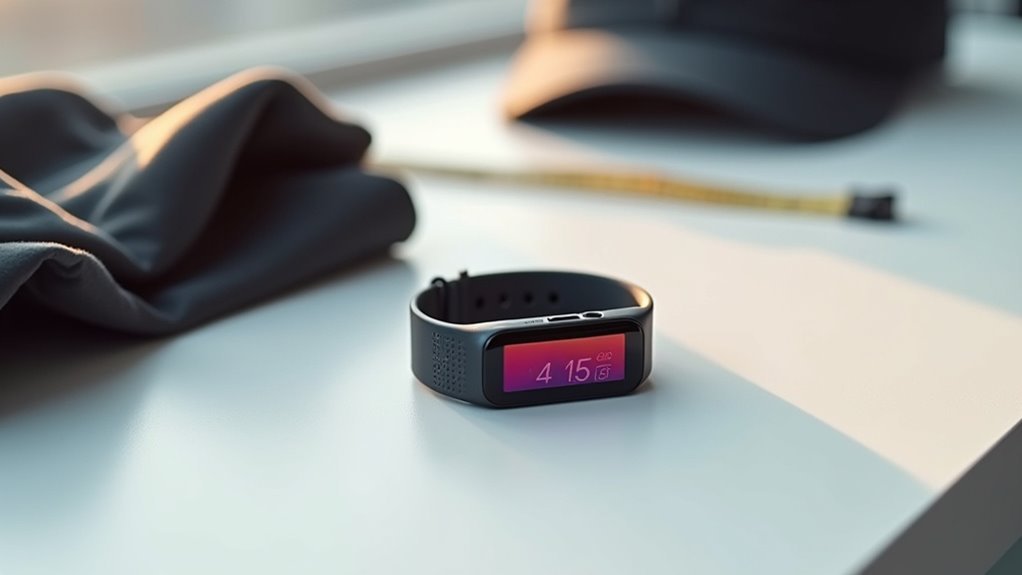
You’ll notice that screen-to-case ratio directly impacts how accurately your fitness tracker responds to touch inputs during workouts.
A balanced ratio between 70%-85% gives you enough usable screen space while maintaining sufficient bezel area to prevent palm rejection issues.
When manufacturers optimize this balance properly, you’ll experience fewer frustrating accidental touches that can disrupt your training sessions. Modern smartwatches like the Apple Watch Series and Samsung Galaxy models demonstrate how proper dimensions contribute to reliable touch performance during active use.
Screen-To-Case Balance Matters
When selecting a fitness tracker, the screen-to-case ratio directly impacts your daily interaction experience and device performance.
You’ll find that balanced proportions create ideal conditions for accurate touch input, reliable sensor readings, and comfortable extended use.
The ideal ratio enhances multiple aspects of your tracker:
- Ergonomic comfort – A 30-40% screen-to-case ratio reduces hand fatigue and prevents edge-of-screen touch misses.
- Sensor accuracy – Proper spacing maintains sensor exposure while providing adequate display space for reliable physiological data.
- UI efficiency – Balanced dimensions support 7mm minimum touch targets, reducing misclicks and improving navigation speed.
Industry benchmarks show leading fitness trackers achieve 30-50% screen coverage, balancing functionality with durability. Research indicates that proper screen dimensions contribute to more accurate diagnostic metrics when trackers are used for health monitoring applications.
This ratio guarantees you can quickly access glanceable information without compromising water resistance or device robustness.
Minimize Accidental Touch Errors
Accidental touches plague fitness tracker users during workouts, daily activities, and sleep tracking, but proper screen-to-case ratios dramatically reduce these frustrating interruptions.
You’ll want a well-designed bezel that creates a buffer zone around your touchscreen, preventing unintended contact during wrist movements. Choose trackers with reduced edge sensitivity and strategically placed physical buttons to minimize reliance on touch inputs.
Look for devices offering customizable touch zones and haptic feedback that confirm your intentional interactions. Capacitive touchscreens outperform resistive ones, especially during sweaty workouts or wet conditions.
Guarantee your tracker fits snugly but comfortably—loose devices shift during movement, increasing accidental touches. Auto-lock features prevent unwanted screen activation, while simplified user interfaces reduce the likelihood of hitting wrong targets during quick interactions.
Consider established brands with good research backing like Fitbit, Garmin, and Apple Watch when selecting your device, as these manufacturers have addressed touchscreen accuracy issues through extensive development and testing.
Consider Watch Thickness Impact on Daily Wear and Sleep Tracking
While screen size often captures your attention when shopping for fitness trackers, the device’s thickness plays an equally significant role in determining whether you’ll actually wear it consistently for daily activities and sleep tracking.
Thicker watches over 14mm create real problems—they’ll snag on sleeves, disrupt your natural sleep posture, and cause uncomfortable pressure points that lead to unconscious removal during the night.
Bulky fitness trackers over 14mm thick interfere with daily activities and compromise sleep tracking through uncomfortable pressure and frequent unconscious removal.
For ideal comfort and data continuity, you’ll want to target trackers under 12mm thick. Here’s why thickness matters:
- Daily comfort: Thin profiles prevent sleeve interference and reduce wrist pressure
- Sleep tracking accuracy: Less bulk means fewer movement artifacts and better sensor contact
- Long-term adherence: Comfortable devices stay on consistently, preserving your health data
Modern thin wearables maintain excellent sensor accuracy while maximizing your wearing compliance. Devices using combined accelerometry and photoplethysmography can achieve up to 90% accuracy for sleep/wake classification while maintaining comfortable form factors.
Optimize Visibility Features for Outdoor and Low-Light Conditions
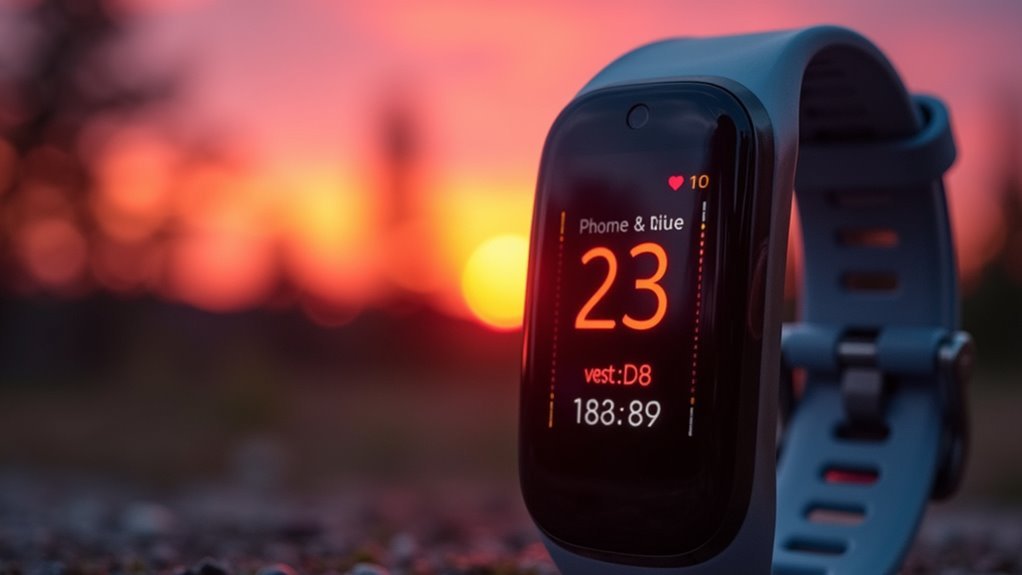
Even the thinnest, most comfortable fitness tracker becomes useless if you can’t read its display when you need it most.
You’ll want a larger screen between 1-2 inches for better outdoor visibility, paired with AMOLED or OLED technology that delivers sharp, bright displays.
Look for devices with adjustable brightness settings and automatic adjustment features that adapt to your environment.
High-nit displays remain visible in bright sunlight, while transflective displays actually use sunlight to enhance readability. The transflective technology in mineral glass displays provides exceptional visibility even in direct sunlight conditions.
For low-light conditions, you’ll benefit from high contrast modes, adjustable font sizes, and OLED’s deep blacks that improve readability.
An always-on display eliminates the hassle of waking your device during activities, ensuring you can check your stats instantly.
Select Customizable Display Options for Quick Data Access
How quickly can you access your most important fitness data when every second counts during a workout? The right customizable display options transform your fitness tracker from a basic device into a personalized dashboard that delivers critical metrics instantly.
Modern trackers offer powerful customization features that streamline your data access:
- Configurable watch faces display your most-used metrics like heart rate, steps, and battery life on the main screen.
- One-tap shortcuts launch workout modes or health dashboards through gesture navigation and assignable action buttons.
- Modular widgets let you prioritize real-time data fields and integrate external sensors for thorough monitoring.
You’ll reduce navigation time considerably by selecting which metrics appear prominently and customizing hotkeys for tracking hydration, stress, or sleep with single touches. Display visibility becomes crucial when comparing options, as screen sizes range from compact 0.5″ displays on basic models to expansive 2.07″ screens on premium devices.
Frequently Asked Questions
Can I Replace a Cracked Fitness Tracker Screen Without Voiding the Warranty?
You can’t replace a cracked fitness tracker screen without voiding your warranty. Opening the device or using third-party repairs violates warranty terms. Instead, contact authorized service centers for replacement options.
Do Curved Screens Perform Better Than Flat Screens for Fitness Tracking?
Curved screens don’t notably improve fitness tracking performance on small wearable devices. You’ll find flat screens more practical for fitness trackers since they’re lighter, use less battery, and fit better on your wrist.
How Do Screen Dimensions Affect Water Resistance Ratings During Swimming?
Screen dimensions don’t directly affect your tracker’s water resistance rating. You’ll find that seal quality around screen edges matters most – manufacturers maintain 5 ATM ratings across various sizes through proper engineering.
Will Larger Screens Interfere With Heart Rate Sensor Accuracy on the Wrist?
Larger screens can interfere with your heart rate sensor accuracy through mechanical stress and optical interference. You’ll need proper sensor placement, device rigidity, and algorithmic compensation to maintain reliable readings.
Are There Screen Protectors Specifically Designed for Different Fitness Tracker Sizes?
You’ll find screen protectors designed for specific fitness tracker models and sizes. Brands like Garmin, Apple Watch, and Samsung offer custom-fit protectors that match your device’s exact screen dimensions and cutouts.
In Summary
You’ve now got the essential knowledge to choose a fitness tracker screen that’ll work perfectly for your lifestyle. Remember to measure your wrist first, then consider how you’ll use the device most often. Don’t overlook the importance of screen quality for outdoor workouts or sleep tracking comfort. Take time to test different models in person when possible, and you’ll find the ideal screen dimensions that’ll keep you motivated and your data easily accessible.

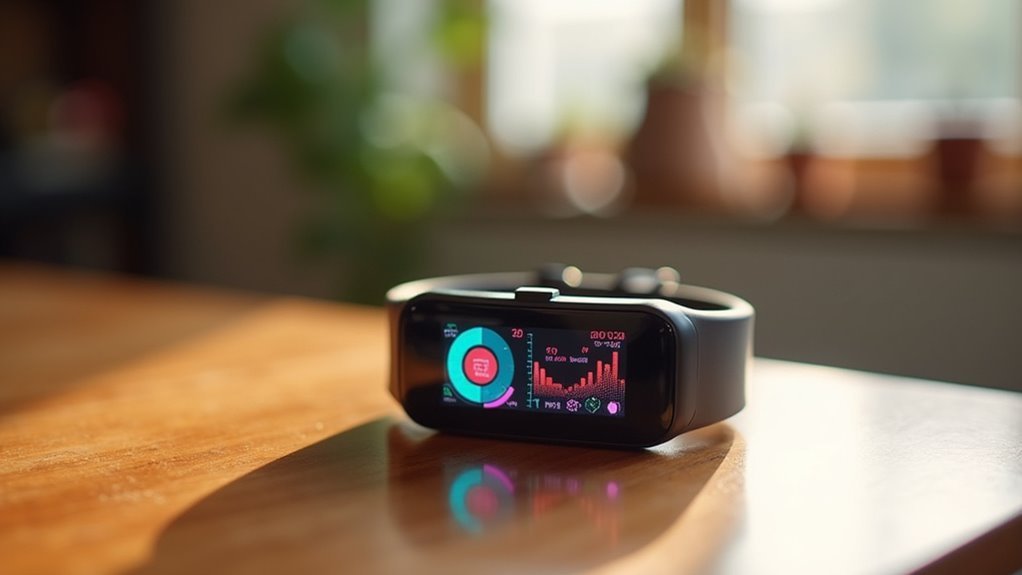
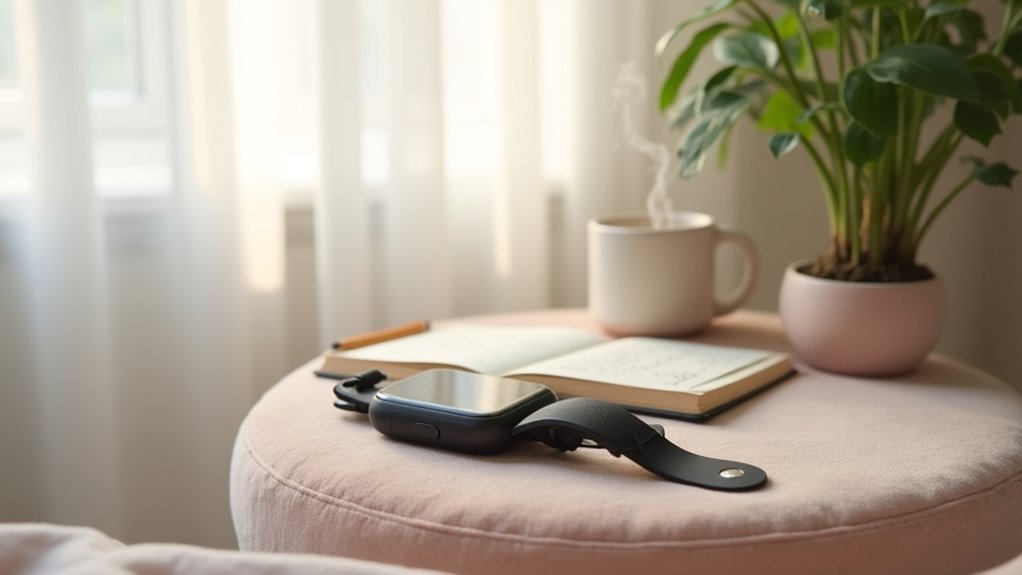
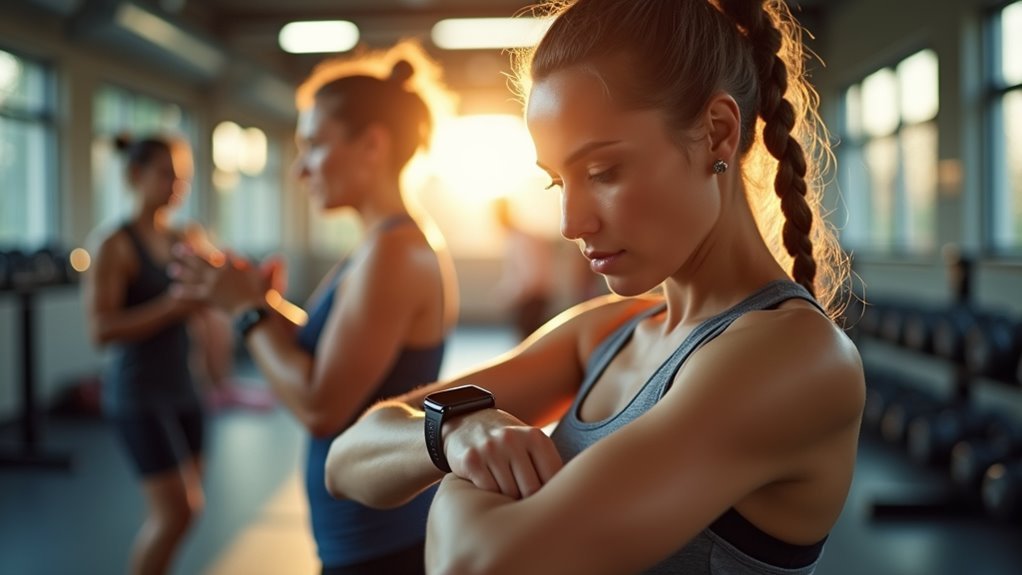
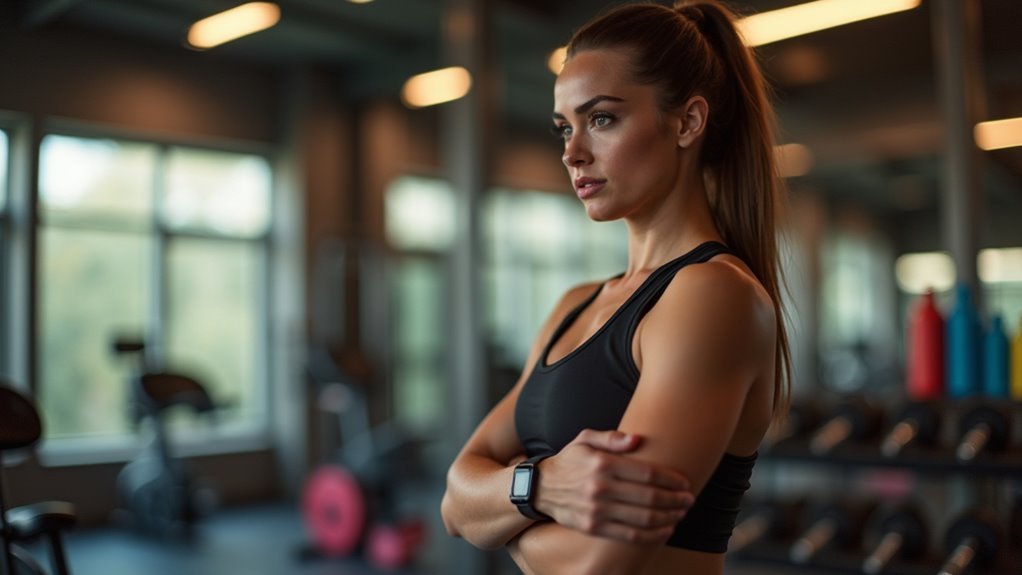
Leave a Reply